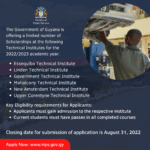I remember standing in my kitchen, a crumpled college brochure clutched in my hand, a knot of excitement and dread tightening in my stomach. The brochure was for a liberal arts college, a place I’d only recently discovered. Before that, my idea of higher education was pretty straightforward: pick a major, get a job. But these liberal arts schools, they promised something different – a broad education, critical thinking, learning for learning’s sake, not just a career path. It sounded wonderful, like a place where I could truly grow, explore different subjects, and figure out who I was and what I wanted to do. The only problem? The price tag. It loomed larger than the college buildings themselves, a towering obstacle that made the dream feel impossible. "How on earth could I ever afford this?" I whispered to myself, the brochure’s glossy pages blurring before my eyes.
That fear, that absolute certainty that a liberal arts education was out of reach, is a story I’ve heard countless times from friends, from students I’ve mentored, and from strangers online. It’s a common misconception that these institutions, often with their smaller class sizes, beautiful campuses, and distinguished faculty, are exclusively for the wealthy. And while tuition figures can indeed be daunting, what many don’t realize, what I certainly didn’t realize at first, is that liberal arts colleges are often incredibly generous with financial aid, especially scholarships. My journey to one of these places, a journey that felt like finding a hidden treasure map, began with the realization that scholarships were not just a remote possibility but a very real, very achievable path to making my dream a reality.
The first step, for me, was understanding what a liberal arts college truly offered beyond just a pretty campus. It wasn’t about specializing in one narrow field from day one. Instead, it was about getting a well-rounded education across humanities, sciences, and arts. Think about it: taking a philosophy class while also studying biology, writing poetry, and learning about economics. This kind of education teaches you how to think, how to ask good questions, how to communicate effectively, and how to adapt to new situations. These are skills that are not only valuable in any career but also incredibly enriching for life itself. Once I truly understood the value of this kind of learning, the desire to attend one became even stronger, fueling my determination to find a way to pay for it.
So, I dove headfirst into the world of scholarships. It felt like I was learning a new language, filled with terms like "merit-based," "need-based," "institutional aid," and "external scholarships." Let me break down what I learned, because understanding these distinctions is key to building a strong application strategy.
Merit-based scholarships are like a pat on the back for being excellent. They’re given for academic achievements – your grades, your test scores, the rigor of your high school curriculum. But they can also be awarded for specific talents, like playing a musical instrument, excelling in sports, or showing exceptional leadership in community service. These are the scholarships that reward you for what you’ve already accomplished and for the unique qualities you bring to the college community. Many liberal arts colleges use these scholarships to attract bright, talented students who will enrich their campus. When I was applying, I made sure to highlight my strong grades, but I also emphasized my involvement in the debate club and my volunteer work at a local animal shelter, showing that I was more than just good at taking tests.
Then there are need-based scholarships. These are designed to help students whose families genuinely can’t afford the full cost of tuition. This is where forms like the FAFSA (Free Application for Federal Student Aid) and the CSS Profile come into play. These forms look at your family’s income, assets, and other financial circumstances to determine how much your family can reasonably contribute to your education. It’s crucial to fill these out accurately and on time, even if you think you might not qualify. You never know what a college’s specific formula might be, and many liberal arts colleges are committed to meeting a high percentage, sometimes even 100%, of a student’s demonstrated financial need. I remember sitting with my parents, meticulously gathering tax documents and bank statements, feeling a mix of embarrassment and hope as we filled out those extensive forms. It felt invasive, but it was a necessary step.
Beyond these broad categories, I learned about institutional scholarships – those offered directly by the colleges themselves – and external scholarships, which come from outside organizations like foundations, corporations, or community groups. Most of the really big scholarship money often comes directly from the colleges, so applying to schools that are known for their generous financial aid is a smart move. But don’t overlook external scholarships; they can add up, helping to cover books, living expenses, or even just a little extra spending money. I spent countless hours searching online databases, checking local community foundations, and even asking my high school counselor about unique local opportunities. It felt like a treasure hunt, and every small scholarship I found, even if it was just a few hundred dollars, felt like a victory.
Now, let’s talk about the heart of the scholarship application process: making your story shine. This is where many students get stuck, thinking they need to be a Nobel Prize winner or a prodigy. But what I learned, and what truly made a difference for me, was the power of authenticity and connection.
The Essay: Oh, the essays! I probably wrote dozens of drafts for various applications. This is your chance to speak directly to the scholarship committee, to let them know who you are beyond the numbers on your transcript. My biggest piece of advice here is to be yourself. Don’t try to guess what they want to hear. Instead, tell a story that reveals your character, your passions, and why you believe a liberal arts education is right for you. For one scholarship essay, I wrote about my love for old books and how reading different genres, from science fiction to historical fiction, opened my mind to new perspectives, much like a liberal arts education promised to do. It wasn’t about being the "best" reader; it was about showing my genuine intellectual curiosity and how it connected to the college’s mission. Show, don’t just tell. Instead of saying, "I am a leader," describe a time you took initiative and what you learned from it. Make sure your essay answers the prompt directly, but also infuse it with your unique voice. Read it aloud to catch awkward phrasing, and have trusted teachers or mentors review it for clarity and impact.
Recommendation Letters: These are crucial. They provide an outside perspective on your abilities and character. Choose teachers, counselors, or mentors who know you well and can speak to your strengths. Don’t just pick the teacher who gave you the highest grade. Pick the one who saw you struggle and overcome, who witnessed your intellectual growth, or who can highlight a unique aspect of your personality. Make sure to ask them well in advance and provide them with all the information they need: your resume, a list of the scholarships you’re applying for, and a brief note about why you’re interested in a liberal arts education. This helps them write a more personalized and compelling letter. I remember feeling a bit shy asking my English teacher, Ms. Evans, but her letter, which spoke about my persistence in revising essays and my thoughtful contributions to class discussions, was incredibly supportive.
Extracurricular Activities: Colleges want to see that you’re a well-rounded individual who will contribute to their community. Your activities don’t have to be a mile long. Quality often trumps quantity. Did you start a club? Volunteer consistently? Work a part-time job? Care for younger siblings? These all demonstrate responsibility, passion, and leadership. Explain what you learned from these experiences and how they shaped you. My involvement in debate wasn’t just about winning; it taught me critical thinking, public speaking, and how to understand different viewpoints, all skills highly valued in a liberal arts setting.
The Interview: Some scholarships, especially larger institutional ones, might require an interview. This is your chance to make a personal connection. Prepare by researching the college and the scholarship thoroughly. Think about why you want to attend a liberal arts college, what you hope to gain, and how you will contribute. Practice answering common interview questions, but also be ready to have a genuine conversation. Ask thoughtful questions yourself. It shows you’re engaged and truly interested. During my interview for a significant scholarship, I remember talking about how I saw the connections between my history classes and current events, and how a liberal arts education would help me make sense of a complex world. It wasn’t about giving "right" answers, but about showing how my mind worked.
As I moved through the application process, I also learned about the importance of being organized. Scholarship deadlines are unforgiving. I created a spreadsheet with scholarship names, deadlines, requirements, and submission statuses. It sounds a bit nerdy, but it was the only way I kept everything straight. Missing a deadline for a promising scholarship can be heartbreaking. Staying on top of everything reduced my stress and ensured I presented my best self.
One thing I often tell students is not to get discouraged by rejections. I received plenty of "no thank yous" along the way. It’s part of the process. Each rejection wasn’t a failure; it was a redirection, pushing me to refine my approach, to look for different opportunities, and to strengthen my next application. The key is persistence. Don’t put all your eggs in one basket. Apply for many scholarships, both big and small. The more applications you submit, the higher your chances of success.
The day the acceptance letter arrived, accompanied by a financial aid package that included a generous scholarship, was one of pure elation. It wasn’t just an acceptance; it was a validation of all the hard work, the late nights, and the moments of self-doubt. It meant that the dream, once seemingly impossible, was now within reach. The scholarship didn’t just cover tuition; it covered a significant portion, making my liberal arts education affordable and removing a huge financial burden from my family.
Attending a liberal arts college with a scholarship was an experience that exceeded all my expectations. Free from the crushing weight of student debt, I was able to fully immerse myself in my studies and campus life. I took classes in subjects I never imagined I’d love – astrophysics, ancient Greek history, even a course on the philosophy of happiness. I joined clubs, studied abroad, and formed deep connections with professors and peers. The critical thinking skills, the ability to write clearly and persuasively, the confidence to speak my mind – these were gifts of my liberal arts education, made possible by that scholarship. I wasn’t just learning facts; I was learning how to learn, how to adapt, and how to connect disparate ideas. This broad foundation made me feel prepared for whatever came next, even if I wasn’t sure exactly what that would be.
Looking back, my journey to a liberal arts college on a scholarship wasn’t just about getting money for school. It was about discovering the true value of education, understanding my own potential, and realizing that obstacles, however daunting, can be overcome with perseverance and a strategic approach. If you’re standing in your kitchen, holding that brochure, feeling that mix of excitement and dread, please know this: a liberal arts education is not just for a select few. It can be for you. The scholarships are out there, waiting to be found. It takes effort, it takes patience, and it takes a belief in your own story. But the rewards – an enriched mind, a debt-reduced future, and a lifetime of opportunities – are absolutely worth every moment of the journey. Don’t let the price tag deter you; instead, let it be the catalyst for your own scholarship adventure. Your future, bright and full of possibility, is waiting.



